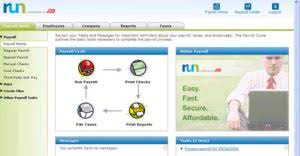
If your business gets steady revenue from invoices but doesn’t collect payment right away, invoice financing might be for you. It’s a business loan that can be helpful if you have an emergency expense or need to keep cash flowing. Stampli is accounts payable automation software designed to simplify invoice CARES Act management by facilitating collaboration between finance teams and approvers.

Invoice Financing: Definition & How it Works
It allows access to funds without having to give up a stake in your business. Every time sales come in, it feels like the money goes directly to paying off ad campaigns or suppliers, meaning your cash is always tied up. This scenario isn’t just frustrating; Insurance Accounting it’s a growth bottleneck many businesses face. Some companies may work with small businesses that have bad credit, while others may be a better fit for younger startups or those with lower annual revenue, so it’s worth your time to investigate options.
- Some companies will look at your personal or business credit and financials.
- To help you find the right fit, we’ve analyzed the top-rated invoice automation tools based on G2 reviews.
- Funding Options are a credit broker and do not provide loans directly.
- Perfect payment terms accelerate cash, telegraph professionalism, and filter out problem clients before they drain your resources.
- So overall, B gets its own money back and 3% of fees on $5,000, which is $150.
If you have limited access to traditional loans
When clients pay their invoices, the business repays the lender, minus a fee or interest. Ultimately, both terms mean selling your accounts receivables (unpaid invoices you have sent out to clients) or borrowing against them by using them as collateral for a short term business loan. Sometimes, receivable financing can refer specifically to invoice discounting, which is only one of the above mentioned types. Some people also consider invoice financing to refer specifically to invoice factoring only, with receivable financing referring to invoice discounting and the removal of the umbrella term altogether.
- Invoice financing and invoice factoring are two financing options that expedite the receipt of cash that’s held up in AR, but they go about them differently.
- Invoice discounting involves borrowing against your sales ledger, this is similar to using invoices clients have not yet paid for as security for a short term loan.
- Invoice financing, also known as receivable financing or invoice trading, is a form of a loan.
- Outside of invoice financing, two popular lending options small businesses turn to are standard loans and credit cards.
- Most businesses fail to collect on time not because their payment terms are unclear, but because they lack a systematic follow-up process.
Turn Your Outstanding Invoices Into Cash
In other words, we give you access to financing from 10K, offering you up to 120 days to settle your invoices. With this approach, you can extend your runway, plus ensure you always pay your invoices on time—giving you the potential to negotiate better rates with your suppliers. For ecommerce businesses with seasonal sales patterns, invoice financing can help you manage inventory and operational costs ahead of peak seasons, ensuring you’re fully stocked and ready to meet customer demand. This type of financing is best for businesses that invoice other businesses (B2B invoices) for goods or services after they have been delivered. The business should regularly invoice other creditworthy businesses.


Invoice financing is a type of alternative business loan not usually found with traditional banks and credit unions. Also called accounts receivable financing or invoice discounting, it uses your outstanding invoices to secure a loan from the lender. Invoice factoring is not confidential and clients will often be required to change the account they pay into. Both forms of invoice finance are only as good as the strength of your debtors and they can be admin heavy.

Cons of invoice financing

Invoice factoring is when a company sells its accounts receivable (AR) to a third-party factoring company, who then works to collect payment from customers. Invoice financing for small businesses is quite effective as invoice financing they might need funds when a huge amount of money is stuck with customers. When the sellers sell goods and services to people, they generate an invoice to mention the outstanding amount payable by customers. The payments might get delayed, which, in turn, could hugely affect the business operations, affecting the demand and supply network adversely. Receivables financing, in such a scenario, allows firms to borrow money from third-party entities against the invoice amount.
Is invoice financing risky?
It focuses on your client’s ability to pay the invoices, so lenders are more willing to work with small business owners who don’t have good credit. Invoice financing helps you use unpaid invoices to secure financing and cover cash flow gaps. But fees easily get expensive compared to conventional business loan interest rates.
- For companies ready to leave manual invoicing behind, automation transforms invoicing from a necessary task into a powerful asset.
- Invoice financing does not eliminate all risk, though, since the customer might never pay the invoice.
- Funding Options, now part of Tide, helps UK firms access business finance, working directly with businesses and their trusted advisors.
- It usually wouldn’t have enough cash to do this until the 15th of the month when a couple of big party planner customers make regular purchases.
- Invoice financing is a form of short-term borrowing in which your business borrows money against the amount due on invoices you’ve issued to your customers.
- As a result, all functions are smoothly carried out without interruption.
Strategic Payment Terms That Improve Cash Flow
What’s more, Juni is a comprehensive platform with features like invoice and card automation to help you manage your finances and streamline payment flows. Businesses with good credit and that meet other business lending qualifications may want to consider other lower-cost financing options, such as a business line of credit. Invoice financing (or accounts receivable financing) has a lot going for it in the right situation, but there are also drawbacks you should consider. Invoice financing companies can charge fees in different ways, but usually they charge a flat percentage (1% to 5%) of the invoice value.




































